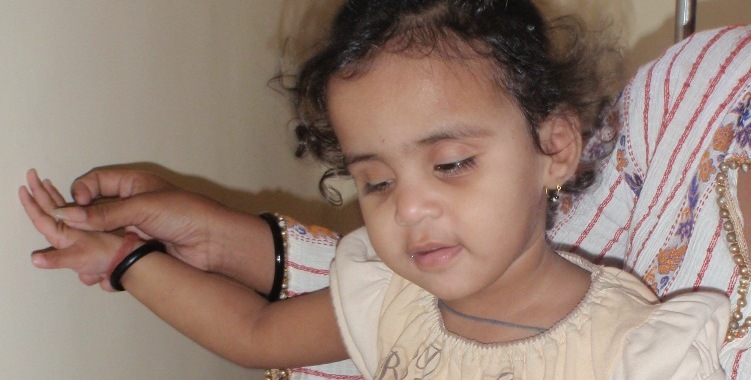It’s hard to believe that less than 100 meters away from the sprawling and flashy Phoenix Mills lies a world just the opposite – at the King George V Memorial, as you turn towards Mahalaxmi station, which is home to over a dozen NGOs. Quiet and bare, this world is home to people in need – street kids, orphans, those with disabilities, as well as the visually-impaired, amongst others. And it is here that one finds the National Association for the Blind’s (NAB) Rehabilitation Centre.
A hill-station-like vibe sets in as you proceed towards the NAB premises, which are located towards the end of this multi-acre property. A vibe that is soon lost as you step into the NAB centre and enter the world of the visually impaired instead. Name plates in Braille, talking computers and walking cranes laid to rest at the foot of desks of the visually impaired are just some of the signs that greet you at this centre.
These premises are where visually impaired people from across the country come to spend anything between three months to two years to learn how to live independently in the world. From daily living skills, such as cooking, bathing, brushing and ironing, to walking through crowded streets, to playing chess/cricket as well as reading and writing Braille, all aspects that will equip a visually impaired person to live independently are taught to them here. What I appreciated the most was the self-defence training that they give girls – taught by a blind lady, this helps them be safe in a man’s world!
From individuals like Darpan, who are blind since birth and have not completely adapted to their surroundings due to lack of exposure or those like Omprakash who have lost sight at a later stage in life, the NAB centre helps people like them overcome their helplessness and disorientation. Set up in 1978, the center’s objectives can be defined by three A’s:
Accepting Blindness
Adjusting to Blindness
and
Achieving despite being blind.
And it is this objective that has prompted the center to offer a wide range of training courses too so that they can be financially independent too.
Training in a vocational trade like physiotherapy/acupressure, as well as making and marketing of candles/agarbattis/paperbags/paperplates and other products is offered. What’s interesting is that once the training is over, NAB also offers them startup assistance by supplying raw materials to help their business truly take off. What I also found remarkable was the call-center and medical transcription training that is offered to those with decent English language skills– introduced in recent years after NAB realised that these conventional sources of employment were drying out.
Had it not been for this post-training assistance, many of the graduates would not really be acquiring their newly-gained skills. Like Sonam who completed the two-year Physiotherapy course, may not have been working at the Mumbai International Airport’s spa and would have to return back to his hometown, where the chances of using this skill are much lower. Nor would Mona be earning Rs. 5,000 as an assistant at Standard Chartered Bank. Infact, NAB has also set up “Drisht” – an inhouse call-centre at their Worli Seaface premises, which is fully operated by visually impaired persons. Drisht is currently managing Vodafone backoffice calls.
Most of the visually impaired that I met here were from far-flung places like Ratlam, Pawan and Ashok and had learnt about this center through one of NAB’s outreach exercises. It’s the cost-free structure of the programme coupled with the free-accommodation as well as lack of alternatives in their hometown that makes NAB’s programme a really attractive choice.
Established in 2000, Give is the largest and most trusted giving platform in India. Our community of 2.6M+ donors have supported 2,800+ nonprofits, impacting 15M+ lives across India.
Discover more from
Subscribe to get the latest posts sent to your email.


this is a very helpful web site!
Thank you. Is there anything more you would like to see here? It's a new initiative by www.Give.do - so we'd really appreciate any feedback on the same.